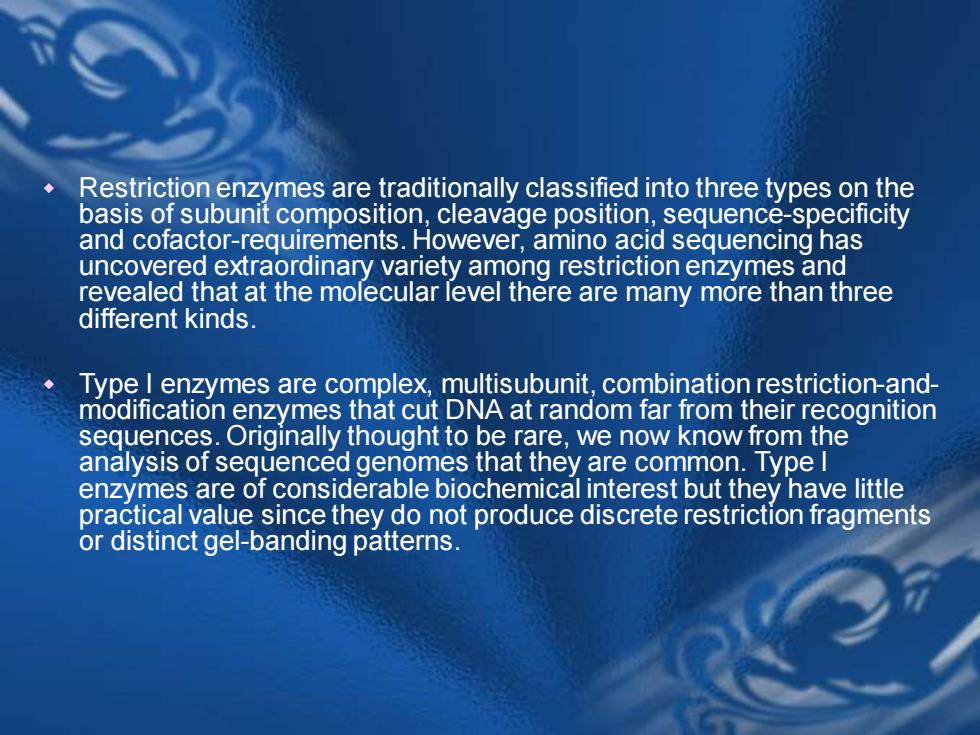正在加载图片...

Restriction enzymes are traditionally classified into three types on the basis of subunit composition, cleavage position, sequence-specificity and cofactor-requirements. However, amino acid sequencing has uncovered extraordinary variety among restriction enzymes and revealed that at the molecular level there are many more than three different kinds. Type I enzymes are complex, multisubunit, combination restriction-andmodification enzymes that cut DNA at random far from their recognition sequences. Originally thought to be rare, we now know from the analysis of sequenced genomes that they are common. Type I enzymes are of considerable biochemical interest but they have little practical value since they do not produce discrete restriction fragments or distinct gel-banding patterns. Restriction enzymes are traditionally classified into three types on the basis of subunit composition, cleavage position, sequence-specificity and cofactor-requirements. However, amino acid sequencing has uncovered extraordinary variety among restriction enzymes and revealed that at the molecular level there are many more than three different kinds. Type I enzymes are complex, multisubunit, combination restriction-andmodification enzymes that cut DNA at random far from their recognition sequences. Originally thought to be rare, we now know from the analysis of sequenced genomes that they are common. Type I enzymes are of considerable biochemical interest but they have little practical value since they do not produce discrete restriction fragments or distinct gel-banding patterns